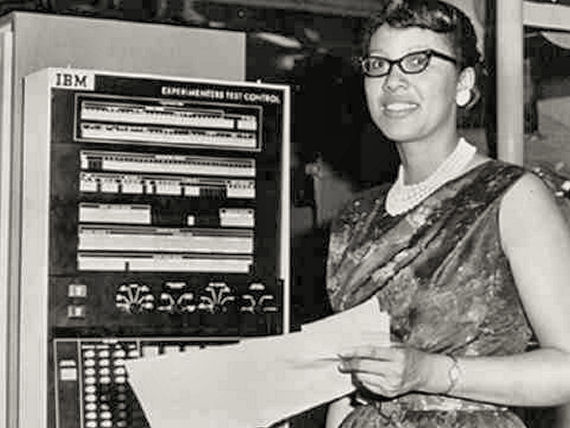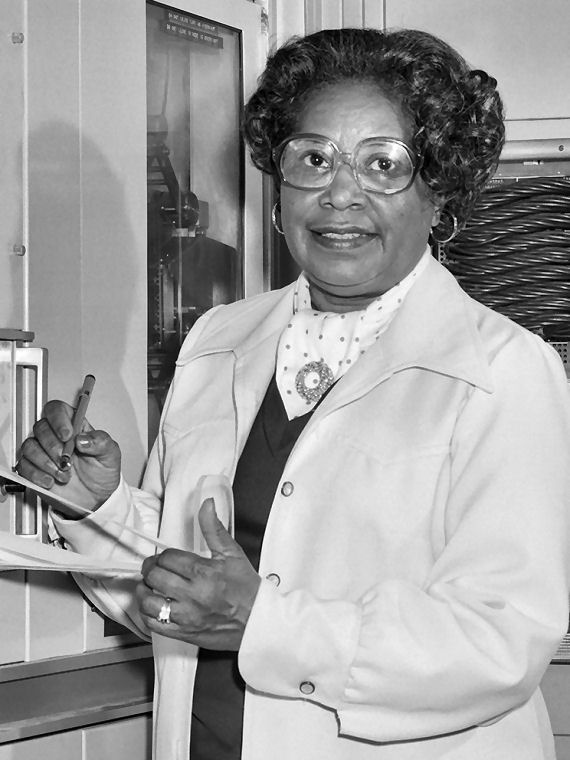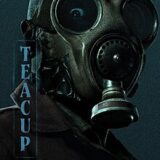
In 1961, when the movie Hidden Figures takes place, the United States was on the verge of launching its first manned space vehicles. I was living in Panama City, Florida, where we had half of a duplex in the Capehart housing complex on Tyndall Air Force Base. My father was a Master Sergeant in the U.S. Air Force, and I was attending Rutherford High School, a brand-new facility built in Panama City because the existing high school, Bay County High, had become too small for the growing number of students. Tyndall was headquarters of the ADC 73d Air Division in the late 1950s, and the NORAD Southeast Air Defense Sector from 1960 to 1979. ADC’s 20th Air Division based at Tyndall was responsible for the air defense of virtually all of the southeastern United States during the 1960s and 1970s, while ADC’s 23d Air Division, also based at Tyndall, was responsible for air defense forces in the upper midwest and south central United States (source: Wikipedia).
My dad was a Machinist, and I belonged to the Air Explorers, a local Boy Scout troop on the base. Our advisors were Air Force officers — in fact, one of our advisors, Captain Albert H. Uhalt, was selected for Gemini training, though he apparently didn’t make the final cut and become a Gemini astronaut. We Scouts were often allowed up in one of the base’s trainers (probably a Beechcraft T-34); in fact, once we were taken up so that we could experience weightlessness — which lasted only a few seconds — for ourselves. For a science fiction fan of 14, that was akin to going up in an actual spacecraft! Because I was a science fiction fan, I was addicted to any and all news about rockets; my dad often brought home stuff about space (and for my 13th birthday, they bought me some SF paperbacks…this is one of them).

On the base, we lived in integrated housing; as far as I knew, the Air Force itself was integrated. Before we moved into base housing (we were one of the early people; houses were still being built when we moved into ours) we lived in town. Because the Florida panhandle (where Panama City is) was still segregated, we white kids rode separate buses to school (our school was — at least according to my memory — miles away from the base) from the black kids. Panama City had a black area colloquially called “Shinetown,” which we rode through in dad’s car many times; quite a few houses there used “Co-cola” and “ROC Co-Cola” and “Nehi” signs as part of their construction. On base we used to pal around with, and play with, the black kids. Off base? Nuh-uh.
If you have grown up post-Civil Rights and outside the Deep South, you probably — even if you’re black — can’t comprehend on a deep level how different society was in those days. For example: my mom — in our early days living in Panama City — got on a bus and sat in one of the empty seats in the rear; the bus driver stopped the bus and made her move to the front of the bus — she was from Australia and had never heard of segregated buses! My five years in that town as a proto-teenager made me very conscious of racism.

There’s an old saying that “a woman has to be twice as good as a man to be thought half as good”; now add “black” to that and double it, and you may have an inkling of what the three women portrayed in this movie faced. (I’m not saying that everything in this movie is absolutely true, because biopics always exaggerate something…but the uphill struggle they faced has the ring of absolute truth.) If you have watched the TV series Timeless, you may remember Episode 8 in the first season, called “Space Race.” In that series, a man named Flynn has stolen a time machine and is attempting to change the past, pursued by an historian (Lucy), a soldier (Wyatt) and a scientist/driver (Rufus) — the latter being the only black man in the time machine’s prototype. This assorted/motley crew arrives at Cape Canaveral, where Flynn attempts to sabotage Neil Armstrong’s Apollo crew’s return to Earth. Lucy, Wyatt (masquerading as “FBI Agent Mulder”) and Rufus — who is condemned to play a janitor in 1969 — meet Katherine Johnson, and assist her in computing a safe return trajectory for Apollo 11 from the Moon. At the time this episode aired (November 2016), Hidden Figures had not yet premiered; that wouldn’t happen until January of this year. So kudos to the writers, producers and stars of Timeless for trying to bring at least one of these women to public consciousness.

So what am I talking about here? Why, I’m talking about the real reason NASA succeeded in launching not only the seven initial American astronauts of Project Mercury, but also the Apollo missions (and probably the Gemini ones too, I’m guessing), three friends and very unlikely real-life heroines: Katherine Goble Johnson (Taraji P. Henson), Dorothy Vaughan (Octavia Spencer), and Mary Jackson (Janelle Monáe). Three very smart and very courageous women, without whom NASA might actually have lost the space race.
At NASA’s space centre — which was then in Langley, Virginia — the three women all worked at one of NASA’s two “Computer Wings.” At that time and place, a “computer” was a woman (always) who operated a desktop mechanical calculator to provide the figures that kept NASA rolling. The East Computer Wing was all white women, while the West Computer Wing was all black women (“colored” in the “polite” parlance of the time and place). Both Katherine and Mary worked as computers, while Dorothy acted as supervisor and kept the West Center going.
When we first meet these women, they are in and around Dorothy’s broken-down ’55 two-tone (aqua/white) Chevrolet, at the side of the road on their way to work at NASA (at Langley). Dorothy is under the car, checking it out — thanks to her dad, she is very mechanical — and Katherine is sitting in the car thinking deep (mathematical, one assumes) thoughts; while Mary is leaning on the back fender waiting either for Dorothy to fix the car — or perhaps to thumb down a ride! In fact, after Dorothy says the starter is dead, Mary announces she’s going to do just that and, as soon as she sticks her thumb out, a car is seen roaring up in the distance. As it gets closer, we can see that it’s a black-and-white with its red lights revolving and its siren whining.

The state cop pulls over and begins interrogating the women, but upon learning they work with the seven Americans who are going to help the good ol’ USA kick some Commie butt (Dorothy totally lied about knowing the astronauts, and the other two backed her up), the statie gives them a lights-and-siren escort all the way to NASA! (Dorothy shorted the starter solenoid, allowing the car to start.)
At NASA, we learn in how little regard these women — despite being the human equivalent of a mainframe computer —are held. In fact, Mrs. Mitchell (Kirsten Dunst) will not even try to confirm Dorothy’s status as Supervisor of the West Computer Wing, even though she has been performing those duties for the better part of a year without a pay raise or official recognition. We also learn that Mary also knows her stuff; Karl Zielinski (Olek Krupa), the Polish engineer who’s working on the Mercury capsule, trying to find out why the panels and ablative heat shield are not working properly (panels fly off in the wind tunnel) — is relying on Mary’s engineering knowledge. He tells her there is a vacant engineering position at NASA, and she should apply for it, because she’s doing the job. She tells him that no woman — let alone a black woman — has ever been employed as an engineer at NASA. He shrugs off her concern, saying “Nobody’s ever gone into space, either, but here we are, doing it.”

We are treated to a montage, showing us some of the highlights of Katherine Goble’s early life. She is, in fact, some kind of a mathematical prodigy — she entered University at age 14 — and is much better than the lowly “computer” job she’s in; but it’s the times. The East Computer Wing — though mathematically inferior to the West — is viewed as superior; and there are still “White” and “Colored” bathrooms, water fountains and, indeed, lunchrooms. (The whites have a proper lunch counter; the black employees — mostly women — get sack lunches with only a choice of beverage.)
But in NASA’s main room, the “geniuses”, led by Al Harrison (Kevin Costner) are responsible for figuring out payloads, rocket capacities, launch and re-entry variables and so on; his second-in-command is a man named Paul Stafford (Jim Parsons) who, while maybe not a racist, certainly shows himself to be incapable of challenging the status quo on gender, race or anything else. They need a computer capable of doing advanced analytics, and Katherine is sent in as the sacrificial lamb — not because she can’t do the math, but because Harrison usually breaks his computers after less than a week. She is warned not to speak to Harrison unless he speaks first. Harrison tells the room that, in addition to her analytic duties, she will be checking the work of the geniuses, including that of Paul Stafford. This does not sit well with him. He throws several binders on her desk for her to check, but she discovers it’s all heavily redacted — she has no security clearance, Paul tells her, but she can just “check what she can see.” (This is patent nonsense. You can’t check formulae if half of them are blacked out.) She has to go to the bathroom, but discovers there is no colored bathroom in that building, so she has to run half a mile back to the West Wing and half a mile back to her desk.

Meanwhile, Katherine, who is a widow and has three little girls to raise, has caught the interest of Colonel Jim Johnson (Mahershala Ali, whom you may remember from a stellar turn as Cornell “Cottonmouth” Stokes, Luke’s “brother” in the Netflix series Luke Cage.) Katherine gains some credibility with Harrison — but none with Stafford — when she figures out (by reading redacted information against the light) that the Redstone rocket can take the Mercury capsule up, but isn’t strong enough to lift it into orbit; for that they need the Atlas/Agena rocket. When the seven original Project Mercury astronauts are brought in to meet NASA’s staff, they are hurried away before coming to where the “computers” (the black women) are waiting —all except for John Glenn (Glen Powell), who makes a point of meeting the women and shaking their hands before Harrison and the rest pull him away.
Meanwhile, the International Business Machines corporation (IBM, in case you forgot) has brought in a giant 7090 mainframe along with associated tape drives, Hollerith punchcard readers and writers, printers and so on; but someone forgot to measure the doorway of the computer (machine, this time) room to see if the machine will go into the room. Harrison (Costner) gives them the traditional engineering answer: “Use the bigger hammer.” (They do.) After the machine is in the room, the next task will be to get it up and running. Dorothy reasons that once they do, she and the rest of the “computers” will be out of a job, and she heads to the library to get a jump on the situation. (There is a neat bit of byplay where she and her kids are asked why they aren’t in the “colored section,” and she replies that the book she wants is in this [the white] section. We are constantly reminded that this is 1961, and there is a double standard when it comes to race — and if you think that these constant reminders are onerous, think about how black people felt back then.). She and her kids are unceremoniously ushered out of the library by a fat security guard; on the bus, she pulls out a book on Fortran (a computer language). Her son asks if she stole it, and she tells him she pays taxes like everyone else, which means she, too, owns that book. “You can’t steal what you already own,” she says.
CLIFFHANGER: Will these three women achieve their lofty ambitions? (Yes) Will NASA send astronauts into space and return them safely to Earth? (YES!) Will Katherine marry Colonel Jim Johnson? (Yes!) Will Al Harrison prove to be a good guy (yes) Will Paul Stafford lose the stick up his butt and start treating Katherine like a human being? (Eh… sorta…) Here’s where I leave you… can’t tell you too much or you won’t watch this wonderful film. RATING: 5¤!
(By the way, there is a scene in the movie that is exactly like the photo in Figure 7…Taraji P. Henson as Katherine sitting at the same desk with the same globe and the same IBM Selectric (with a Letter Gothic ball) typewriter. Cool. I loved this movie. Really — and Taraji has a wonderful smile!
If you feel like it, please comment on this column. Comment here, or comment on my Facebook page, or in the several Facebook groups where I publish a link to this; I don’t care. I welcome Your comments, whether you agree with me or not. My opinion is, as always, my own, and doesn’t necessarily reflect the views of Amazing Stories or its owners, editors, publishers or other columnists. See you next week!











Steve Schlich pointed out that in Figure 7, Katherine is NOT sitting in front of a Selectric. It’s an adding machine… maybe I need new eyeballs or something. Thanks, Steve!